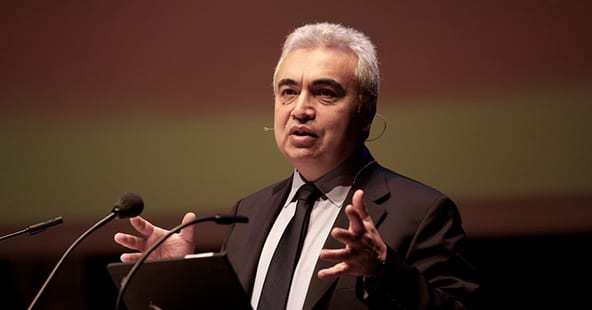(CNBC) Fossils fuels are no longer the largest recipient of investment in the energy sector, the latest report from the International Energy Agency said Tuesday.
Investment in the electricity sector received the largest level of investment for the first time ever, growing its share by 12 percentage points to 43 percent between 2014 and 2016. In comparison, over the same period, investments in upstream (exploration and production) oil and gas fell 44 percent.
“The key finding is that (the) global energy industry spent last year 12 percent less than the previous year,” Fatih Birol, executive director of the IEA, told CNBC on Tuesday. “A big decline,” he described.
According to the IEA, the global drop in energy investment was mainly caused by falling unit capital costs in upstream oil and gas but also due to reduced drilling and less fossil fuel-based power capacity.
Geographically, China continued to be the largest recipient of energy investment, representing 21 percent of the global share. However, according to Birol from the IEA, the surprising story was India, jumping 7 percent from 2015 to 2016 in terms of energy investment.
“India is moving to the center stage of global energy affairs,” he said.
Despite the current drags on investment, the IEA is confident that global oil and gas upstream investment will come back to growth this year, by about 6 percent. This is due to the current OPEC-led deal to freeze production until March 2018, which should revamp prices and boost investment, as well as a 53 percent upswing in U.S. shale investment.
However, the IEA warned that many of the largest oil and gas companies are still implementing a “cautious approach” and as a result have indicated their intentions to revise down their anticipated investment plans in case oil prices do not remain above $50 a barrel.
“What we see is no major rebound,” Birol said about market prices in the aftermath of the OPEC deal. “Therefore, what worries me a lot is, around 2020s, a major demand-supply gap with serious implications for the markets,” he said.
Oil prices fell once again on Tuesday on the back of the IEA’s report and an ongoing fuel supply overhang, which has led several banks to cut their price forecasts.
“I cannot talk about prices, but what I can tell you is that when I look at the investments, which are becoming more and more short-term focused, when I look at growing demand and (the decline) of existing oil fields to avoid major supply disruption problems 2020s, we need a miracle,” he said.



